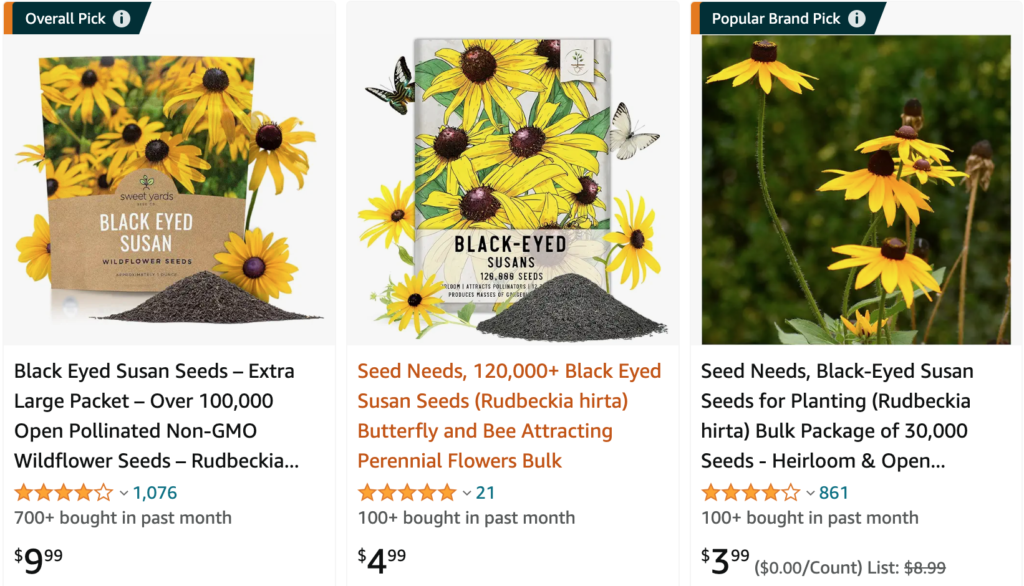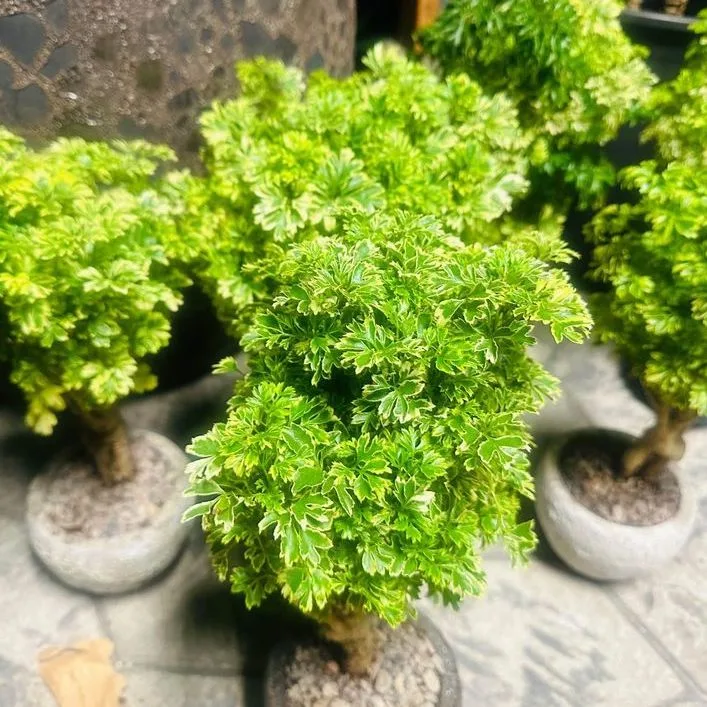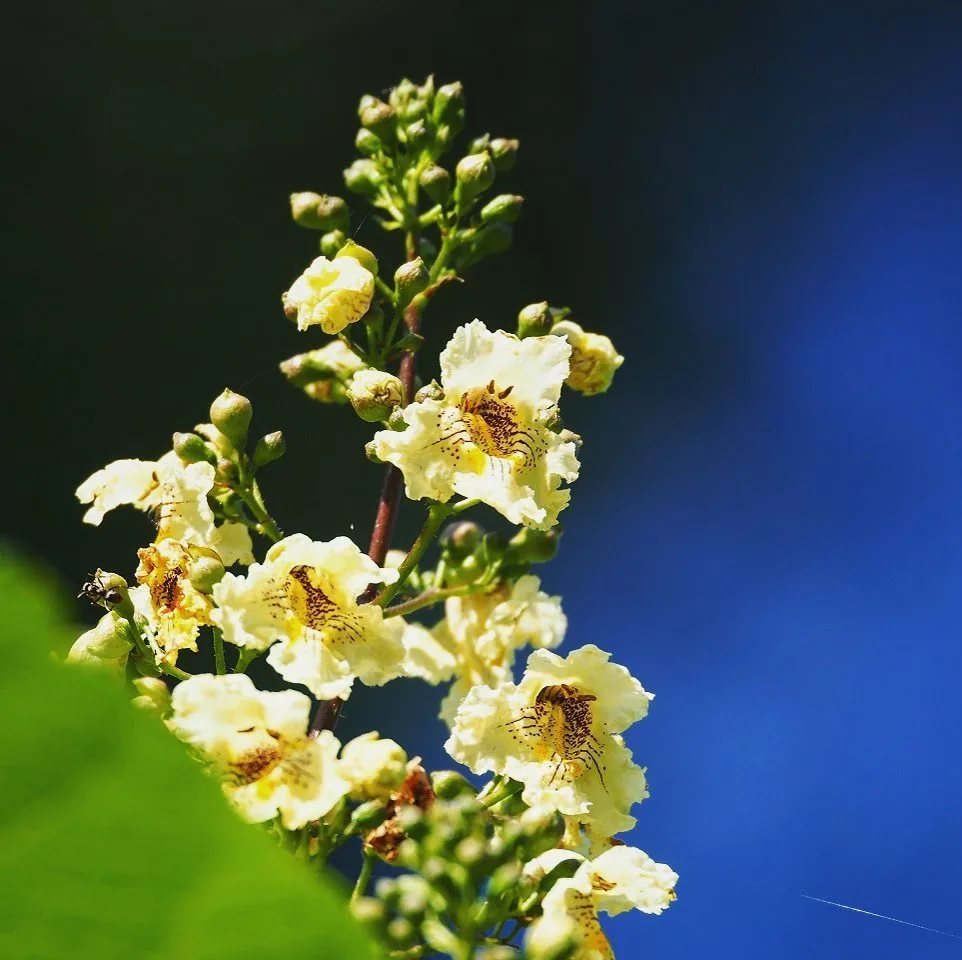
When to plant black eyed susan?
I love planting Black Eyed Susan in the spring when the soil is warm and the risk of frost has passed, as it gives them a great start for the growing season.
Do deer eat black eyed susan?
Deer rarely touch my Black Eyed Susan plants, which is a relief because they can be quite a menace in my garden.
31 Species in Genus Rudbeckia
Does black eyed susan come back every year?
Every year, I eagerly anticipate the return of my Black Eyed Susan, as it reliably comes back and fills my garden with its bright, cheerful blooms.
How to plant black eyed susan seeds?
When planting Black Eyed Susan seeds, I scatter them on the surface of the soil and lightly press them down, ensuring they have good contact with the soil but are not buried too deeply.
Is black eyed susan a perennial?
I’ve always considered Black Eyed Susan a perennial in my garden, as it consistently returns each year and spreads its vibrant yellow petals.
What do black eyed susan seeds look like?
The seeds of Black Eyed Susan are small, dark, and almost conical, making them easy to recognize when I’m collecting them for future planting.
Do black eyed susan spread?
In my experience, Black Eyed Susan spreads quite readily, creating a beautiful, naturalized area in my garden without much effort on my part.
Do bees like black eyed susan?
Bees absolutely adore my Black Eyed Susan plants, and it’s always a joy to watch them buzz around the blooms.
Do you deadhead black eyed susan?
I make sure to deadhead my Black Eyed Susan regularly to encourage more blooms and keep the plants looking tidy throughout the growing season.
How deep to plant black eyed susan seeds?
Planting black-eyed Susan seeds deeply involves finding a balance. I’ve found that planting them just below the soil surface, about 1/4 inch deep, works well. It gives them enough coverage to establish roots without burying them too deeply.
Can black eyed susan grow in shade?
Black-eyed Susans can grow in shade, but from my experience, they thrive best in full sun. In shadier spots, they tend to produce fewer blooms and may not grow as vigorously.
How big does black eyed susan get?
From what I’ve seen in my garden, black-eyed Susans can grow quite large, typically reaching heights of around 2 to 3 feet tall. They have a nice bushy habit and can spread out nicely in the right conditions.
How many petals does a black eyed susan have?
The black-eyed Susan flower typically has around 10 to 20 petals. They’re known for their vibrant yellow petals and dark brown centers, which give them a distinct look in the garden.
Is black eyed susan poisonous to dogs?
As a dog owner, I’ve been cautious with plants in my yard. Black-eyed Susans are considered mildly toxic to dogs if ingested in large quantities, so it’s something I keep in mind and try to discourage my pets from nibbling on them.
Why are my black eyed susan leaves curling?
When I noticed my black-eyed Susan leaves curling, I learned it could be due to several reasons, including dry soil or heat stress. Providing adequate water and ensuring they’re not exposed to prolonged periods of intense sunlight helped mitigate this issue.
Can i plant black eyed susan seeds in the fall?
Based on my experience, planting black-eyed Susan seeds in the fall can be successful, especially in mild climates. They have time to establish their roots before winter sets in, resulting in stronger plants for the following spring and summer.
Rudbeckia Hirta vs Fulgida
In my garden, Rudbeckia Hirta’s vibrant blooms always steal the show with their larger, showier flowers compared to the more understated, smaller blooms of Rudbeckia Fulgida, which has a more subtle charm but doesn’t quite catch the eye like Hirta does.
Black Eyed Susan vs Sunflower
Black Eyed Susans have this wonderful, cheerful vibe that’s perfect for filling in gaps in my flower beds, but Sunflowers, with their towering presence and big, bright faces, really make a bold statement and become the focal point of any garden.
Black Eyed Susan vs Brown Eyed Susan
I’ve noticed that Black Eyed Susans offer a more classic garden look with their deep, dark centers and golden petals, while Brown Eyed Susans have a softer, more muted tone that blends well with other plants but doesn’t pop quite as much.
Black Eyed Susan vs Coneflower
Black Eyed Susans are great for a vibrant splash of color, but Coneflowers have won me over with their unique spiky petals and longer-lasting blooms, adding a touch of texture and interest that Black Eyed Susans just don’t offer.
Black Eyed Susan vs Daisy
Black Eyed Susans bring a bold, rich color to the garden, but I find Daisies’ simple white petals and yellow centers give a more classic, wholesome look that contrasts nicely with the more vivid hues of the Black Eyed Susan.
Black Eyed Susan vs Coreopsis
While Black Eyed Susans stand out with their rich, golden hue, Coreopsis provides a delightful variety of colors and a more delicate appearance, which makes it a fantastic choice for adding a bit of diversity and texture to my garden.
Black Eyed Susan vs Echinacea
Black Eyed Susans’ sunny disposition and long blooming season make them a favorite of mine, but Echinacea’s medicinal benefits and distinctive cone-shaped center provide a different appeal, especially when I want something both beautiful and functional.
Black Eyed Susan vs Weed
Black Eyed Susans have become a staple in my garden due to their vibrant color and reliability, whereas weeds are just a constant nuisance that I have to deal with, often competing with my flowers for space and nutrients.
Black Eyed Susan vs Butterfly Milkweed
Black Eyed Susans always bring a burst of cheerful color to my garden, but Butterfly Milkweed attracts more butterflies and has a unique, striking orange that stands out, making it a wonderful choice for a pollinator-friendly garden.
Black Eyed Susan vs Shasta Daisy
Black Eyed Susans have a warm, golden glow that’s hard to miss, but Shasta Daisies’s crisp white petals and yellow centers create a more classic, clean look that pairs beautifully with other flowers and often reminds me of a traditional, well-tended garden.
If i die, water my plants!



